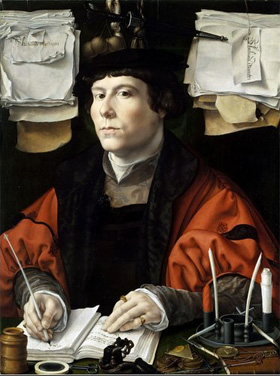3.8.24 — Your Money or Your Life
Before there was capitalism, there was money. Think of Judas and his thirty pieces of silver. Matthew, before becoming an apostle, might have collected taxes on it.
It may have been a flimsy thing or awkwardly bulky and heavy, but a lot turned on it. Now the Morgan Library makes the case for just how much, in “Medieval Money, Merchants, and Morality,”  through March 10. If it has a discomforting moral for an institution founded by a man of means to display priceless possessions, it may say more than the museum itself ever knew. Together with a report on “Morgan’s Bibles,” it is also the subject of a longer and fuller review in my latest upload.
through March 10. If it has a discomforting moral for an institution founded by a man of means to display priceless possessions, it may say more than the museum itself ever knew. Together with a report on “Morgan’s Bibles,” it is also the subject of a longer and fuller review in my latest upload.
The Morgan gives new meaning to “your money or your life,” the afterlife. When Hieronymus Bosch painted Death and the Miser, with sacks of money tempting a man on his deathbed, he was taking up a subject familiar from illuminated manuscripts and Sunday sermons. If a deathbed seems an unlikely place to accumulate wealth, it is only, after all, a parable. The show includes Petrarch and Geoffrey Chaucer, who wove the message into their poetry (although Chaucer also makes the case for merchant cunning). Bosch himself had an unmatched talent for bringing an older world view to the very height of the Renaissance. As his interior passes into depth, in proper perspective, it presents one temptation after another in cabinets, shelves, and doors.
More than half the show elaborates on that message. A still more lavish deathbed scene appears in The Hours of Catherine of Cleves from around 1440, across from the fire of Purgatory. Boys in another book of hours scramble for a shower of coins, ignoring the Visitation of Mary and her mother, Anne, on the facing page. A saint flees an entire golden mountain, by Fra Angelico, while gesturing toward an actual city on a hill. With Albrecht Dürer, the prodigal son at last comes home. If accumulating wealth is bad, spending is worse.
It was not too late for the prodigal son, and it is not too late for you. So at any rate goes the story, but has its moment already passed? Bosch’s painting teems with devils, and devils always put on the best show. Those boys scrambling for money could be your neighbors at play. One work on display is more lavish than the next, from the gold leaf of medieval painting to the subtler richness of the Renaissance. Saint Francis may have renounced worldly goods, but a High Renaissance collector possessed Giovanni Bellini’s Saint Francis in the Desert.
Those contradictions run happily through the show, right down to its title. Is this medieval money, merchants, and morality? Not just morals are changing. A show that opens with Bosch cannot be all that medieval, and sacks of gold are not yet money. (Wikipedia assigns a present-day equivalent for thirty pieces of silver, but I am not so certain.) Bosch hangs next to an imposing strongbox and actual coins from the late 1300s, so flimsy that one might mistake them for paper tokens in a child’s game.
The exhibition tells a different story as well. It is about the emergence of a new merchant class and the spirit of capitalism—for whom wealth was a mark of divine favor and charity is owed to only the “deserving” poor. By its end, money becomes more intricate and weightier. It had to do so, because coins at first established their value by their weight. And then mere paper takes on arbitrary value as well. If a medieval manuscript has its unmatched glories, a merchant’s register or a text on money management is a book, too.
The curators, Diane Wolfthal and Deirdre Jackson, add two paintings, for additional stages in a Renaissance economy. They are not just displays of wealth, like so much art in Tudor England, but portraits of getters and spenders. The first, by Hans Memling, a man in black holding a pink carnation, hesitates to speak of just what he does for a living—but the second, by Jan Gossart in 1530, glories in it. The tools of this man’s trade have the magic of still life, and his records hang like wallpaper. They foretell a time when wealth can go not to charity or the church, but to a library like Morgan’s, and the party of religious zealots can favor tax cuts to the wealthy. Fitting or chilling, a camel need no longer go through the eye of a needle for a rich person to enter the kingdom of God.
Read more, now in a feature-length article on this site.